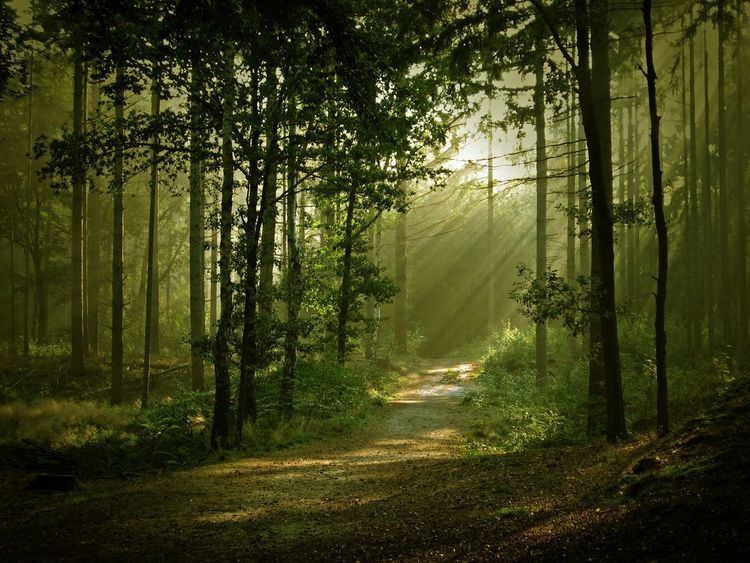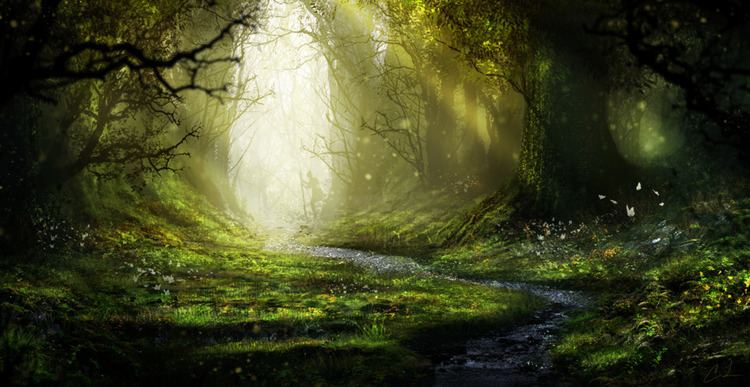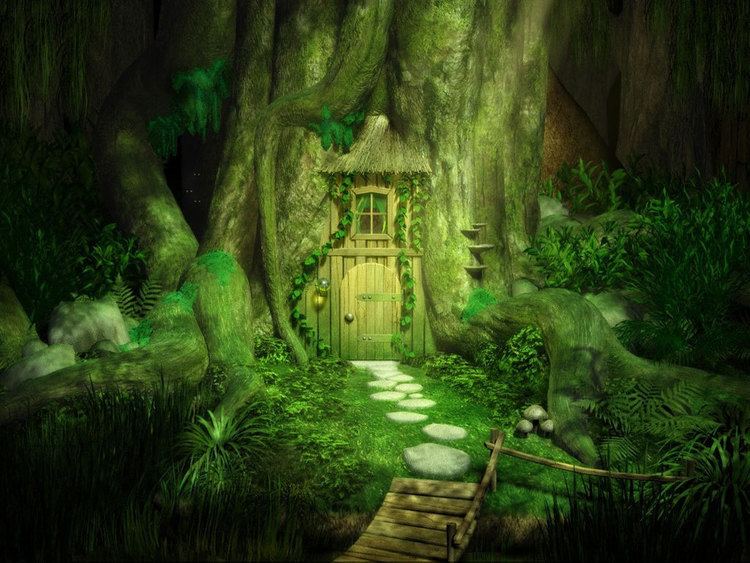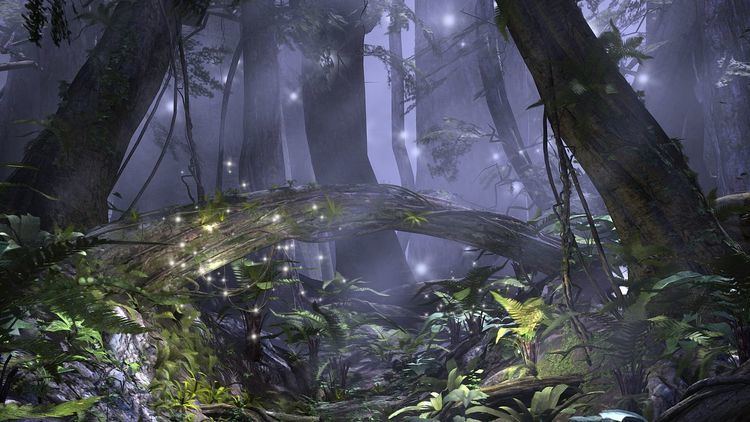 | ||
3 hours of nature sounds sleep meditation windy enchanted forest no music
In literature, an enchanted forest is a forest under, or containing, enchantments. Such forests are described in the oldest folklore from regions where forests are common, and occur throughout the centuries to modern works of fantasy. They represent places unknown to the characters, and situations of liminality and transformation.
Contents
- 3 hours of nature sounds sleep meditation windy enchanted forest no music
- Folktales
- Mythology
- Medieval romance
- Renaissance
- Known inhabitants and traits
- Modern fantasy and other media
- References

The forest can feature as a place of threatening danger, or one of refuge, or a chance at adventure.

Folktales

The forest as a place of magic and danger is found among folklore wherever the natural state of wild land is forest: a forest is a location beyond which people normally travel, where strange things might occur, and strange people might live, the home of monsters, witches and fairies. Peasants who seldom if ever traveled far from their villages could not conclusively say that it was impossible that an ogre could live an hour away. Hence, in fairy tales, Hansel and Gretel found a cannibalistic witch in the forest; Vasilissa the Beautiful encountered Baba Yaga herself; Molly Whuppie and her sisters ran into a giant. It was in a forest that the king of The Grateful Prince lost his way, and rashly promised his child for aid, where the heroines, and their wicked stepsisters, of The Three Little Men in the Wood and The Enchanted Wreath met magical tests, and where Brother and Sister found the streams that their evil stepmother had enchanted. In Beauty and the Beast, Belle's father is lost in the forest when he finds the Beast's castle. The evil cat-spirits of Schippeitaro live in the forest.

Indeed, in Grimm's Fairy Tales, the hero always goes into the forest. It is not itself enchanted, but it contains enchantments and, being outside normal human experience, acts as a place of transformation. The German fairy tale has an unusual tendency to take place in the forest; even such neighboring countries as France or Italy are less like to have fairy tales situated in the forest.

Even in folklore, forests can also be places of magical refuge. Snow White found refuge with dwarfs from her stepmother, The Girl Without Hands found a hut to stay in when she had been slandered to her husband, and Genevieve of Brabant found not only a refuge from slander but a doe magically came to her aid. Even Brother and Sister hid in the forest after their stepmother turned the brother into a deer.

At other times, the marvels they meet are beneficial. In the forest, the hero of a fairy tale can meet and have mercy on talking animals that aid him. The king in many variants of the ballad The Famous Flower of Serving-Men finds an enchanted hind that leads him astray uncanny, but it brings him to a talking bird that reveals to him a murder and that a servant of his is actually a woman, whom the king then marries. It is in the forest that the dwarf of Rumpelstiltskin and the fairy of Whuppity Stoorie reveal their true names and therefore the heroines of those tales have a way to free themselves. In Schippeitaro, the cats reveal their fear of the dog Schippeitaro when the hero of the tale spends the night in the forest.
The creatures of the forest need not be magical to have much the same effect; Robin Hood, living in the greenwood, has affinities to the enchanted forest. Even in fairy tales, robbers may serve the roles of magical beings; in an Italian variant of Snow White, Bella Venezia, the heroine takes refuge not with dwarfs but with robbers.
Mythology
The danger of the folkloric forest is an opportunity for the heroes of legend. Among the oldest of all recorded tales, the Sumerian Epic of Gilgamesh recounts how the heroes Gilgamesh and Enkidu traveled to the Cedar Forest to fight the monsters there and be the first to cut down its trees.
In Norse myth and legend, Myrkviðr (or Mirkwood) was dark and dangerous forest that separated various lands; heroes and even gods had to traverse it with difficulty.
Romans referred to the Hercynian Forest, in Germania, as an enchanted place; though most references in their works are to geography, Julius Caesar mentioned unicorns said to live there, and Pliny the Elder, birds with feathers that glowed.
Medieval romance
The figure of an enchanted forest was taken up into chivalric romances; the knight-errant would wander in a trackless forest in search of adventure. As in the fairy tales, he could easily find marvels that would be disbelieved closer to home. John Milton wrote in Paradise Regained (Bk ii. 359) of
Fairy damsels met in forest wide
By knights of Logres, or of Lyones,
and such ladies could be not only magical aid to the knight, but ladies for courtly love. Huon of Bordeaux met the fairy king Oberon in the forest. Guillaume de Palerme hid there with the princess he loved, and found a werewolf who would aid him. In Valentine and Orson, the Queen is sent into exile and so forced to give birth in the woods; one child, taken by a bear, turns to a wild man of the woods, who later aids Valentine, his long-lost brother. In the "Dolopathos" variant of the Swan Children, a lord finds a mysterious woman – clearly a swan maiden or fairy – in an enchanted forest and marries her. Genevieve of Brabant, having rebuffed a would-be lover and found herself accused of adultery by him, escaped to the forest.
This forest could easily bewilder the knights. Despite many references to its pathlessness, the forest repeatedly confronts knights with forks and crossroads, of a labyrinthine complexity. The significance of their encounters is often explained to the knights – particularly those searching for the Holy Grail – by hermits acting as wise old men – or women. Still, despite their perils and chances of error, such forests are places where the knights may become worthy and find the object of their quest; one romance has a maiden urging Sir Lancelot on his quest for the Holy Grail, "which quickens with life and greenness like the forest."
Dante Alighieri used this image in the opening of the Divine Comedy story Inferno, where he depicted his state as allegorically being lost in a dark wood.
Renaissance
In the Renaissance, both Orlando Furioso and The Faerie Queene had knight-errants who traveled in the woods. In Jerusalem Delivered by Torquato Tasso (1581), enchantments placed on the only forest near Jerusalem prevent the Crusaders from constructing siege engines for most of the epic poem, until they are broken by Rinaldo.
While these works were being written, expanding geographical knowledge, and the decrease of woodland for farmland, meant the decrease of forests that could be presumed magical. In A Midsummer Night's Dream, William Shakespeare wrote of a forest that was enchanted specifically by the presence of Oberon and Titania, the fairy king and queen; like many forests in Shakespeare's works, it becomes a place of metamorphosis and resolution. Others of his plays, such as As You Like It, take place in a forest, which contains no enchantments but acts much as the forest of folklore.
Known inhabitants and traits
The forest is often filled with magical animals, plants, maybe even magical rocks and creeks.
Often there will be Dragons, Dwarfs, Elves, Fairies, Giants, Gnomes, Goblins, Imps, Ogres, Trolls, Unicorns, and other mythical creatures.
The vegetation consists of trees that talk or with branches that will push people off their horses, thorny bushes which will open to let people in but close and leave people stuck inside, and other plants that move, or turn into animals at night, or the like.
Some stories have sorcerers and witches living somewhere in the depths of the forest.
Perhaps there will even be creeks which will turn unwary travelers into frogs if drunk from.
Modern fantasy and other media
The use of enchanted forests shaded into modern fantasy with no distinct breaking point, stemming from the very earliest fantasies.
